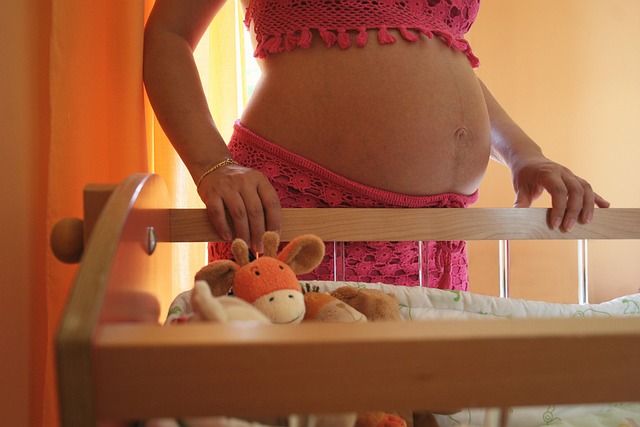I adore autumn. It’s the season I eagerly anticipate each year, and this time was no different. I was excited to be fully recovered from surgery and ready to create cherished memories with my family—apple and pumpkin picking, fall festivals, long strolls, birthdays, and Halloween festivities.
After a challenging summer battling severe premenstrual dysphoric disorder (PMDD) and undergoing major surgery, I was looking forward to a well-deserved respite. Little did I know, an unexpected event was lurking just around the corner.
While walking my daughter to school, just a stone’s throw from our home, I suddenly struggled to breathe, and an intense pain shot through the left side of my chest. My heart raced, and I felt dizzy and frightened, but I masked my discomfort as I said goodbye to my sweet girl. I had no idea that might be my last farewell.
The grim reality is that nearly one-third of individuals diagnosed with pulmonary embolism do not survive. That statistic hit me hard, and I needed a moment to process it. The walk home with my five-year-old son, which typically took five minutes, stretched into twenty as I moved slowly. I managed to call my husband, expressing that something wasn’t right and that I needed to head to the emergency room after he dropped our son off at school.
As I grappled with anxiety and breathing difficulties, I, unfortunately, convinced myself I was dealing with pneumonia or pleurisy again—common issues for someone with asthma and other chronic conditions. Upon arriving at the hospital, I was quickly given a bed and an IV, followed by a complete blood panel.
When the ER doctor delivered the news, I was blindsided. “I have good news and bad news,” he said, and my heart sank. What could be worse than pneumonia? My mind raced through terrifying possibilities, like cancer.
He informed me that my D-dimer levels were elevated, indicating a risk of blood clots, and I would need to be admitted. At that moment, I learned about the D-dimer test—a crucial diagnostic tool that ultimately set the course for my recovery.
The good news? I would soon have my own hospital room and be able to get a CT scan to check for blood clots. They immediately started me on the blood thinner Lovenox through my IV, aimed at preventing existing clots from worsening and stopping new ones from forming. I also underwent an echocardiogram and Doppler ultrasound of my legs, both of which thankfully showed no issues.
Though I had never experienced a blood clot before, I had several risk factors, including the use of estrogen from birth control pills, my recent surgery, and extended periods of bed rest. The Mayo Clinic mentions that additional risk factors can include pregnancy, cancer, heart disease, smoking, long trips, and obesity, particularly in women who smoke or have high blood pressure.
I knew about the risks associated with the Yaz birth control pills I had been taking. I understood the dangers of my recent hysterectomy and oophorectomy. Yet, I never imagined that I, a woman in my 40s with no prior history of blood clots, would actually develop one. Surprise!
My hospital stay lasted three days, during which the staff was exceptionally kind and knowledgeable. Despite my fear and longing to be with my family, the nurses and doctors were there to support me, even as I joked with one of them about her fondness for needles. My abdomen, covered in bruises from the injections, became a reminder of my fight for life.
The CT scan revealed multiple bilateral pulmonary emboli. I would be on blood thinners for at least six months, requiring frequent blood tests and scans. While there are other oral blood thinners available, I had adverse reactions to them.
Recovery varies for each patient, lasting anywhere from weeks to months or even years. For me, it has been a prolonged journey. Just as I was recovering from surgery, I received this diagnosis, which exacerbated my anxiety and made it difficult to breathe and walk far distances.
I had experienced anxiety before, but now it reached new heights. Even the simplest tasks sometimes felt overwhelming, but I knew I had to exercise to support my recovery and prevent further clots. I’m currently on medication to help with the anxiety, and I hope to regain my normalcy by spring.
Though the next six months will be challenging and filled with uncertainty, I have the unwavering support of my family, friends, and medical team. I take each day as it comes, cherishing the faces of my children and husband, and thanking my lucky stars that I’m still here. I’m determined to show them how much I love them and to make every moment count.
I urge everyone to familiarize themselves with the symptoms of pulmonary embolism and to discuss this crucial and potentially deadly condition with friends and family. It can affect anyone, and the risk factors increase with age. Conversations about the dangers of birth control pills, especially those containing drospirenone, are vital. I genuinely believe the pills I took were responsible for my unexpected blood clots, just as they caused a close friend of mine to suffer a stroke.
While I was unaware of pulmonary embolism symptoms before my ordeal, I trusted my instincts that something was amiss. My decision to go to the ER that day was life-saving. Now, even with limited activity, I can once again appreciate my favorite season.
I love autumn—now more than ever.
Summary
In this personal account, a woman reflects on her near-fatal experience with a pulmonary embolism. After struggling with breathing and chest pain, she learns about her condition and the risks associated with birth control pills. Despite her fears and anxiety, she emphasizes the importance of awareness and support from loved ones as she navigates her recovery journey, cherishing every moment with her family.
Keyphrase: pulmonary embolism survivor story
Tags: [“home insemination kit”, “home insemination syringe”, “self insemination”]
